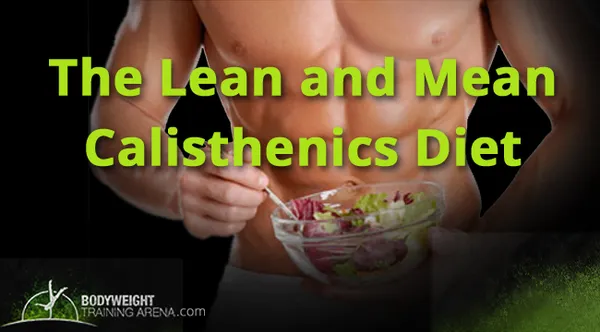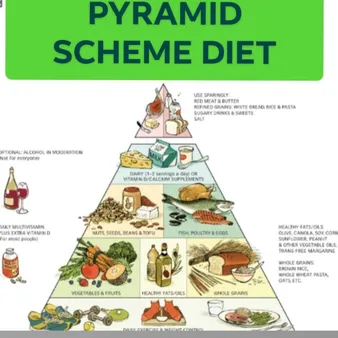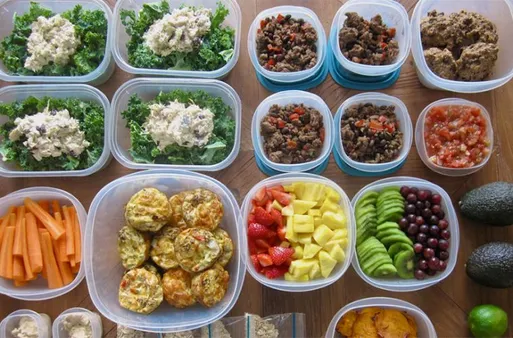Table of Contents
Are you looking to get in shape without spending hours in the gym? If so, then a calisthenics diet may be right for you. Calisthenics is a form of exercise that uses your own body weight as resistance. It is a great way to build strength, endurance, and flexibility. And because it is so portable, you can do it anywhere, anytime. If you are new to calisthenics, it is important to start slowly and gradually increase the intensity of your workouts over time. And be sure to eat a healthy diet that will support your fitness goals. With a little effort, you can achieve your fitness goals with a calisthenics diet. For more information on calisthenics and other fitness tips, visit our website at Kizworld.com.
Ripped, Fit, & Strong With The Calisthenics Diet No Extremism. Just Results.
What is Calisthenics Diet? | Benefits | Core Principles |
Nutrient-rich, whole-food based diet | Enhanced cardiovascular health | Prioritizes fruits, vegetables, lean meats |
Supports hydration | Improved muscular strength | Limits processed foods |
Emphasizes food group balance | Aids weight loss | Encourages adequate hydration |
Heightens flexibility | Fosters discipline and mental toughness | Focuses on nutrient density |
I. Calisthenics Diet: A Comprehensive Guide to Nutrition for Bodyweight Training
Understanding the Calisthenics Diet
The calisthenics diet is a nutrient-rich, whole-food based diet designed to support the unique demands of bodyweight training. It emphasizes the consumption of fruits, vegetables, lean meats, and whole grains while limiting processed foods, sugary drinks, and unhealthy fats. By providing the body with the essential nutrients it needs, the calisthenics diet helps fuel workouts, enhance recovery, and optimize overall health.Learn more about the benefits of a calisthenics diet
Essential Macronutrients for Calisthenics
The calisthenics diet places a strong emphasis on consuming adequate amounts of macronutrients, including carbohydrates, protein, and fats. Carbohydrates provide the body with energy, protein supports muscle growth and repair, and fats provide essential fatty acids and hormones. The ideal ratio of macronutrients for calisthenics athletes varies depending on individual needs and training intensity, but a good starting point is to aim for 40-50% carbohydrates, 30-40% protein, and 20-30% fats.
Macronutrient | Function | Sources |
|---|---|---|
Carbohydrates | Provides energy | Fruits, vegetables, whole grains |
Protein | Supports muscle growth and repair | Lean meats, poultry, fish, beans |
Fats | Provides essential fatty acids and hormones | Nuts, seeds, avocados, olive oil |
Discover how to design a calisthenics routine that meets your needs
Calisthenics Diet: A Comprehensive Guide to Nutrition for Bodyweight Training
II. Essential Macronutrients for Calisthenics
Carbohydrates: Fuel for Energy
Carbohydrates are the body's primary source of energy, providing fuel for intense calisthenics workouts. Complex carbohydrates, such as those found in whole grains, fruits, and vegetables, release energy slowly and steadily, sustaining performance throughout training sessions.
Protein: Building Blocks for Muscles
Protein is essential for building and repairing muscle tissue, which is crucial for calisthenics athletes. Lean protein sources, such as chicken, fish, beans, and tofu, provide the amino acids necessary for muscle growth and recovery.
Fats: Essential for Hormone Production
Healthy fats play a vital role in hormone production, cell function, and energy storage. Calisthenics athletes should include sources of unsaturated fats, such as nuts, seeds, and avocados, in their diet to support overall health and performance.
By understanding and incorporating these essential macronutrients into their diet, calisthenics athletes can optimize their training and achieve their fitness goals.
Nutrient | Function | Sources |
|---|---|---|
Carbohydrates | Energy | Whole grains, fruits, vegetables |
Protein | Muscle building and repair | Chicken, fish, beans, tofu |
Fats | Hormone production, energy storage | Nuts, seeds, avocados |
Essential Macronutrients for Calisthenics
III. Hydration and Recovery in Calisthenics
The Importance of Hydration
Staying hydrated is crucial for overall health and performance, and it's especially important for calisthenics athletes. When you exercise, you sweat, and if you don't replace the fluids you lose, you can become dehydrated. Dehydration can lead to fatigue, muscle cramps, and even more serious health problems.
To avoid dehydration, it's important to drink plenty of fluids before, during, and after your workout. Water is the best choice, but you can also drink sports drinks or coconut water. Avoid sugary drinks like soda and juice, as these can actually dehydrate you.
Recovery After a Calisthenics Workout
After a calisthenics workout, it's important to give your body time to recover. This means getting enough rest, eating a healthy diet, and staying hydrated. Rest is essential for muscle growth and repair. Aim for 7-8 hours of sleep each night.
Eating a healthy diet is also important for recovery. Make sure to eat plenty of protein, carbohydrates, and healthy fats. Protein is essential for muscle growth and repair, carbohydrates provide energy, and healthy fats help to reduce inflammation.
Related Posts:
Nutrient | Benefits |
|---|---|
Protein | Muscle growth and repair |
Carbohydrates | Energy |
Healthy fats | Reduce inflammation |
Hydration and Recovery in Calisthenics
IV. Sample Calisthenics Diet Plan
Breakfast
Kick-off your day with a nutrient-packed breakfast that fuels your body for the intense demands of calisthenics training. Oatmeal, a complex carbohydrate, provides sustained energy, while berries offer a burst of antioxidants. Eggs, a complete protein source, support muscle recovery and growth. A slice of whole-wheat toast provides additional fiber and essential vitamins.
- 1 cup oatmeal with 1/2 cup berries and 2 tablespoons nuts
- 2 eggs with 1 slice whole-wheat toast
- 1 cup Greek yogurt with 1/2 cup fruit and 1 tablespoon granola
Lunch
Replenish your energy stores with a balanced lunch that combines protein, carbohydrates, and healthy fats. Grilled chicken or fish provides lean protein, while brown rice or quinoa offers complex carbohydrates for sustained energy. A side of steamed vegetables ensures a dose of essential vitamins and minerals.
- 4 ounces grilled chicken with 1 cup brown rice and 1 cup steamed broccoli
- 6 ounces grilled salmon with 1 cup quinoa and 1 cup mixed greens salad
- Tuna salad sandwich on whole-wheat bread with 1 cup carrot sticks
Dinner
End your day with a satisfying dinner that promotes muscle recovery and prepares your body for rest. Lean meats, such as chicken or turkey, provide protein for muscle repair. Sweet potatoes or roasted vegetables offer complex carbohydrates and essential nutrients. A side of leafy greens, like spinach or kale, ensures a dose of vitamins and minerals.
- 4 ounces roasted chicken with 1 cup sweet potato and 1 cup spinach salad
- 6 ounces grilled turkey with 1 cup roasted vegetables and 1 cup brown rice
- Lentil soup with 1 slice whole-wheat bread and 1 cup mixed greens salad
Snacks
Throughout the day, refuel with healthy snacks that provide sustained energy and support your training goals. Fruits, such as bananas or apples, offer natural sugars and essential vitamins. Nuts and seeds provide healthy fats and protein. Yogurt is a great source of protein and calcium.
- Banana with 1 tablespoon peanut butter
- Apple with 1/2 cup cottage cheese
- 1 cup Greek yogurt with 1/4 cup berries
Hydration
Staying adequately hydrated is crucial for calisthenics performance and overall health. Water should be your primary source of hydration, but you can also incorporate electrolyte-rich beverages, such as sports drinks or coconut water, during intense training sessions.
Nutrient | Benefits |
|---|---|
Protein | Muscle growth and repair |
Carbohydrates | Energy for training |
Healthy fats | Hormone production and cell function |
Vitamins and minerals | Overall health and well-being |
Sample Calisthenics Diet Plan
V. Conclusion
The calisthenics diet is a great way to improve your overall health and fitness. It is a healthy, sustainable way to lose weight, gain muscle, and improve your performance. If you are looking for a diet that can help you reach your fitness goals, the calisthenics diet is a great option.